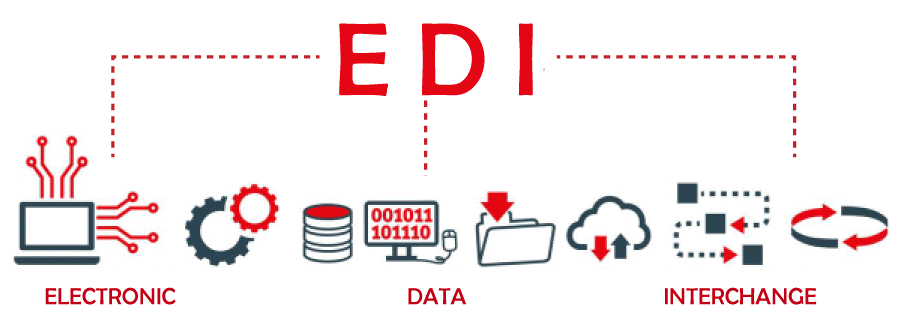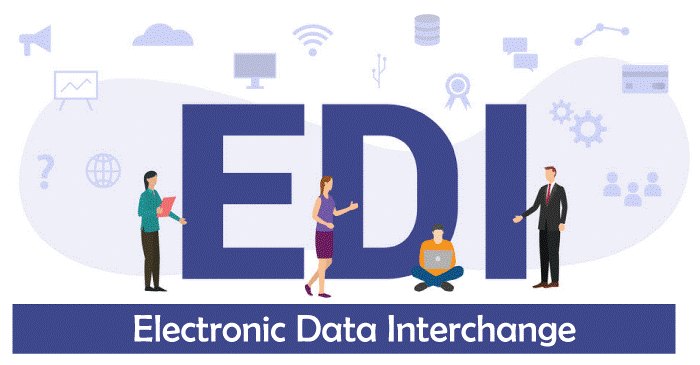Advantages and Disadvantages of Electronic Data InterchangeEDI: DefinitionSince 1960, interest in EDI's nature and significance within organizations has grown rapidly. As a result, it is becoming more and more desirable to create a tactical connection between EDI's strategic capabilities and its actual operational value. EDI is the short form for Electronic Data Interchange and is electronic document interchange among two or more enterprises. Large enterprises use it primarily to quickly and precisely execute business operations throughout a secured network. In EDI transactions, information is transported directly from one organization's computer application to another organization's computer program. Industries now exchange various document types via EDI connectivity, including purchase orders, invoices, requests for quotes, loan applications, and more. Most of the time, these companies are trading partners who often deal with Goods and services as an element of their supply channels and business-to-business (B2B) networking. 
How EDI operatesThe EDI message standards serve as the basis for all EDI transactions. Good governance practices are necessary for data quality. The EDI communication cannot be processed properly if the required information is omitted or placed incorrectly. The foundation of EDI talks is standards. The Recognized Standard Committee X12, ODETTE, TRADACOMS, GS1, Peppol, and others maintain the EDI message standards (ASC X12). There are primarily two forms of EDI transmission:Direct connections between two or more computers or systems over the Internet without using an intermediary, usually using secure protocols. Value-added network (VAN): A third-party network oversees data transmission using the mail boxing concept. Secure File Transfer Protocol (SFTP), Applicability Statement 2 (AS2), an HTTPS-based protocol, Simple Object Access Protocol (SOAP), and other internet transmission technologies are examples of EDI standards. Such things as sender ID and recipient ID are examples of EDI data elements. Data segments integrate two or more linked components to increase their significance. As an illustration, CUSTOMER NAME might be created by combining FNAME and LNAME. In addition to carrying the sender and recipient addresses, envelopes structure many data types. Documents circulation or message flow in EDI refers to the transfer of EDI communications to numerous inbound and outgoing destinations and departments to carry out business operations or transactions. Extensible Markup Language (XML) and JavaScript Object Notation (JSON) are examples of metalanguages that support rather than replace EDI. Businesses must manage an ever-growing range of document formats and transmission choices. With over 2,000 partners, one worldwide manufacturer routinely trades 55 distinct document kinds. Advantages of Electronic Data Interchange(EDI)
Even though many firms are benefiting from EDI, others are still cautious about giving it a try due to a few drawbacks. Disadvantages of Electronic Data Interchange(EDI)

ConclusionThe majority of industries today that agree to use EDI systems do so because they are certain of the added advantages that EDI would bring to their entire organizational structure. The advantages of EDI as a communication system are universally acknowledged. However, some still fail to see and make the most of the potential benefits a paperless system and the incorporation of electronic data transfer may provide their firm. The B2B industry's standard protocol would always be EDI standards. For smaller businesses, efficiency and rapidity are crucial. The replacement of all Labor-intensive paper procedures and repetitive cycles with an electronic system that is more efficient and accurate is needed. It indicates that only oligarchs can shift valuable resources into more profitable endeavours. Larger firms, on the contrary, can profit from standardized, integrated, and expedited business processes. Real-time information about other trading partners enables executives to establish better strategic linkages and enables buying and supply chains to operate harmoniously. Participating businesses may focus on what they do best, forging lasting relationships with customers, developing innovative goods and services, and launching new markets, free from administrative issues. The previous four decades have seen an incredible game-changer with Electronic Data Interchange (EDI). |
 For Videos Join Our Youtube Channel: Join Now
For Videos Join Our Youtube Channel: Join Now
Feedback
- Send your Feedback to [email protected]
Help Others, Please Share










